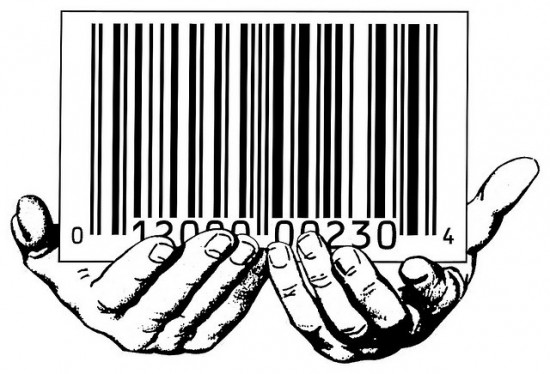Twitter has arrived and entrenched itself as an indispensable marketing channel for both B2B and B2C brands alike. What started out as engaging with customers using a free and quick social platform has now transformed into the fine art of extracting value out of every interaction and co-relating them with the gold standard in measurable returns – SALES.
So how do we string together cause and effect relationships between Twitter activities and conversions? By being systematic, having clarity about business goals and using a little creativity in the way we look at data.
1. Understand what is important and what to measure
Different businesses have different needs. Some need to measure visitors from Twitter, some would like to know about conversions, some care more about their Twitter engagement. Set clear objectives of what metrics you need to measure.
The most important Twitter metrics that impact almost every business are:
- Traffic from Twitter
- Engagement
- Leads
- Conversions
- Revenue
Then there are the key Twitter metrics that may not directly contribute to your sales, but are part of the larger funnel which will eventually trickle down into paying customers like
- Followers
- Retweets
- Link Clicks
- Brand Influence
- Positive Brand Mentions
While you have the option of tracking a number of other softer metrics, you’d be spreading yourself too thin by measuring things that may not be relevant to your business. Pick what matters and focus on growing these numbers month on month.
2. Zero in on a good analytics tool (or two)
Based on what it is that you’d like to measure, you can choose from hundreds of free and paid tools that do a decent job with Twitter analytics. The only problem is that there is no single tool that will give you everything you want. You’d be best served with a combination of tools that will distill the best out of all your Twitter activities. Here are five of the best tools you could pick from:
Google Analytics is the most comprehensive, free and simple way to connect your Twitter activities to actual business goals. With Google Analytics you can measure traffic from Twitter, conversions from Twitter as well as map results vs campaign objectives. Its consolidated social media dashboard allows you to capture as well as compare your Twitter performance against that on Facebook or Linkedin. Larger organizations that need even more juice from Google Analytics can choose to go with a premium account.
Want to know more about Google Analytics and Twitter? Here’s a great read on setting up and rolling out Google Analytics for tracking your social media activity
Hootsuite is a one-stop social media management tool that also integrates great analytics to boot. Hootsuite allows you to manage multiple user accounts, across various social media platforms, schedule tweets / posts, and then track all of these activities with some of the most in-depth analytics and reporting available. With Hootsuite’s ow.ly link shortening service, you can even shorten your links right within Hootsuite before sending out a tweet. It has a freemium model, with the paid version offering significant advantages over the basic free account.
Bitly – probably the most popular link shortening tool on the web – is indispensable on Twitter. Besides performing its original task of shortening links, Bitly provides detailed analytics on every shortened link. It tracks link clicks, website traffic, leads and conversions in real time. It integrates really well with other social media tools like Tweetdeck, Tweetfeed or Buffer and can be used for other social media platforms like Facebook or Linkedin equally effectively. It stores historical data on past links, so you can revisit previous campaigns and see which ones are still driving traffic to your site. The best part about Bitly? It’s free!
While primarily known as a scheduling and social media management tool, like Hootsuite, Buffer offers a range of analytical tools to measure Twitter reach, engagement, influence etc. It can be linked to Google Analytics with tracking codes and can also deliver the harder numbers like conversions and leads from your Twitter account. You can also use URL shorteners like Bitly with Buffer without losing out anything on tracking and analytics.
Sprout Social is another great tool to manage all your social media platforms from one location. In their own words, SproutSocial helps you ‘engage, publish and analyze’ your social media efforts. A highlight of Sprout is how it allows you to offer best in class customer support to your followers on Twitter.
3. Set up tracking tokens
When you walk out of a store with a purchase under your arm, the store automatically knows which particular item, belonging to which brand and how many SKUs of it were actually sold. In brick and mortar stores, they manage this with barcodes on their products. With simple tools like Shopify’s barcode printer, creating barcode labels for each product in your store is a piece of cake.
What a barcode is to brick and mortar, a tracking code is to social media. While metrics like engagement, retweets, influence and sentiment can be measured by simply using any of the umpteen free and paid analytics tools out there, to measure the business impact of your Twitter feeds you need to have clear tracking systems in place.
A tracking code is embedded at the end of the link that you want to track and then the modified link is tweeted the way you would normally post your tweets.
Here’s what a sample tracking token looks like:
/?utm_medium=social&utm_source=twitter
You can even track each campaign that you launch by creating campaign tags and appending these tags at the end of your tracking tokens like this:
/?utm_medium=social&utm_source=twitter &utm_campaign=mothersday
Campaign level tracking allows you to check which campaigns worked and which didn’t. It allows for improvements and course corrections. It also offers marketers a chance to attribute results to specific campaigns instead of attributing them to Twitter as a channel on the whole.
4. Generate reports
Once you have set up your brand’s Twitter presence, the key metrics, goals and the tracking mechanisms for each of them, it’s time to generate reports that are lucid and insightful.
Your reports could be the standard ones that come with your analytics platforms or you can custom make reports with elements that your business needs to focus on. Head here for some inspiration on creating effective report structures.
Over to You
Twitter has been credited with leading political revolutions (remember the Arab Spring and the Occupy movements?), bringing customers face to face with brands, allowing brands to create memorable and rewarding experiences and last but definitely not the least, enabling customer service like never seen before. With the levels of Twitter adoption among users and the power of Twitter as a platform, you can’t afford to ignore it. So make the best of the resources spent on your Twitter presence, by letting ROI be your guiding principle and reap the rewards of one of the youngest marketing tools in a brand manager’s tool kit.
___
- How to Build Your Subscriber List Using Social Media - December 2, 2025
- A Step-by-Step Guide to Measuring What Twitter Contributes to your Bottom-line - June 4, 2014
- 6 Steps to Turn Guest Posting on its Head - June 17, 2013
- How to Blog in a Post-Panda World - October 25, 2012




Hello Prathik,
This was a good post with handful details about tools that can be used in conjunction with Twitter. Great write !